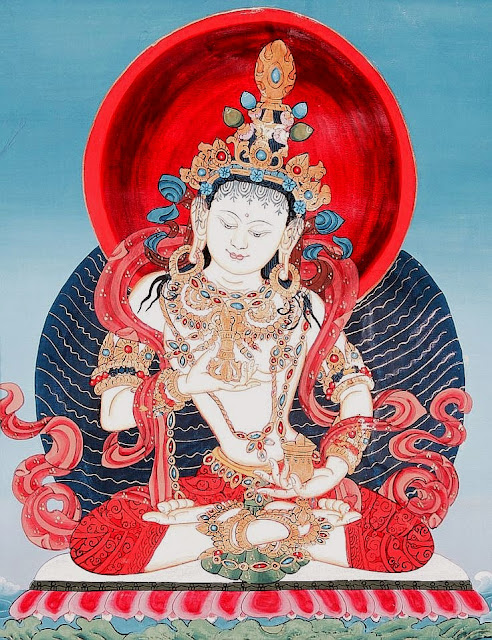Introduction
In Chapter 7, we explored how obstacles can be transformed into the path through devotion and right view. Yet, beyond transformation lies another discovery: adversity itself can give rise to a unique radiance.
This radiance is not distant or mystical—it is the quiet luminosity of the awakened heart, polished by hardship and revealed through devotion to the Guru.
Adversity is often the guest we least wish to welcome. It arrives uninvited, heavy with discomfort, fear, and loss. Yet, for a practitioner on the Vajrayana path, adversity is not merely a burden to endure. It is a mirror, a teacher, and—if embraced with devotion—a source of unexpected radiance.
When hardships press upon us, they strip away illusions. Illness exposes the fragility of life. Failure unmasks the pride that silently binds us.
Loneliness reminds us of our deep interdependence with all beings. Each blow that life delivers is not only pain, but also the polishing stone that reveals the jewel hidden within.
This radiance is not mystical in the sense of dissolving into rainbows. It is subtler, quieter, and closer than we imagine. It shows itself when a face softens after anger has been transformed into patience.
It glimmers in the compassion that arises from a heart once broken. It shines in the calm presence of one who has walked through storms and now shelters others beneath their stillness.
In Vajrayana, the Guru embodies this radiance perfectly. When devotion is steady, even our darkest moments are illuminated by the Guru’s compassionate mirror.
We begin to see that pain, when held with faith, becomes fuel for awakening. Obstacles are no longer chains; they become wings.
This is the alchemy of adversity. What once seemed like poison can be transmuted into medicine. A wound is no longer a mark of weakness but an opening through which wisdom flows.
And when this radiance is born from our own hardship, it is not ours alone. It naturally shines outward, encouraging and uplifting those who walk beside us.
Radiance born from adversity is not reserved for saints or mystics. It is found in the mother who sings to her child despite exhaustion, in the worker who labors honestly amid struggle, in the practitioner who whispers mantras through illness.
Such light may not appear in scriptures or sutras, but it shines in the everyday acts of resilience and love.
Self-Reflection
When life places difficulties before me, do I see them only as chains that bind me, or can I begin to recognize them as wings that might lift me higher?
When pain arises, do I contract in fear, or can I offer it into the ocean of the Guru’s wisdom and let it dissolve into light?
And when I stand in the midst of hardship, can I remember that this very moment holds the seed of radiance—not only for myself, but for all beings who walk this path with me?
If I can hold adversity in this way, then every wound becomes a teacher, every loss a doorway, and every challenge a lamp that lights the way home.
This article is intended solely for general illustration and educational reading. It does not disclose any secret tantric texts or teachings, and makes no attempt to transmit esoteric instructions that are restricted or require formal empowerment.
All effort has been made to respect the sacred boundaries of Vajrayana practice and to uphold the integrity of samaya vows and Dharma protectors.
Thank you for reading. May you find peace and great bliss. Your support helps spread the Buddha’s precious teachings and turn the Dharma wheel in the world.
May the precious Bodhichitta, which has not yet arisen, arise and not diminish, but rather increase further and further.
Dedication of Merit:
By this merit, may we swiftly attain omniscience. Having overcome the enemies of wrongdoing, may we liberate all beings from the ocean of existence, with its stormy waves of birth, old age, sickness, and death.
Note
I do not own or infringe any copyright on
the picture(s).
Picture(s) courtesy and credit to the rightful
distributors and/or studios
The picture(s) are intended for ed itorial use only.
























































